
Photo: Pixabay
*Expert advice in the preparation of this article was provided by Professor Aleksandar Jovović, Faculty of Mechanical Engineering, University of Belgrade
There is no doubt that the main sources of air pollution are the same all over the world – the energy sector, commercial, institutional and household heating, transportation, industry, agriculture, and waste management. However, in countries which have imposed legal limits on harmful emissions and which encourage the application of state-of-the-art technologies, air polluters are causing far less damage than they do in countries lacking or failing to implement such regulations.
Examples of good practice can be found in the European Union (EU), while Western Balkan countries have a long road ahead of them. They need to set emission limits, tighten the rules – and then implement them, and turn the problem of air pollution into an opportunity for a cleaner and greener growth.
On September 7, the world marked the first ever International Day of Clean Air for blue skies, with the theme “Clean Air For All.” On that day Balkan Green Energy News published an article titled Clean Air For All – a lesson on key air pollutants, the first in a series of texts aimed at demystifying the topic of air pollution and providing useful and relevant information and knowledge about this increasingly important issue.
In this text, we address the main sources of air pollutants, or air pollution. The issue of sources is a very sensitive one because it entails not only a bad image and reputation for a sector, company, or country, but also responsibility for endangering people and the environment as well as the obligation to reduce or completely eliminate the pollution.
The sources of pollution are divided into two main groups: a) natural, or biological, and b) anthropogenic, which arise from human activities.
Anthropogenic sources of air pollutants (based on the European Commission/Environment/Cleaner air for all):
- Burning fossil and other fuels for commercial and household heating and in heating plants with a capacity below 50 MW
- Burning fossil fuels for the production of electricity and heat – thermal power plants, district heating plants
- Industrial and construction activities
- Burning fossil fuels in vehicles in road transportation
- Agriculture
- Oil processing and oil products storage
- Burning fossil fuels in non-road mobile machinery – construction machinery, ships, lawnmowers.
*Waste management is also one of the main sources of the air pollutants.
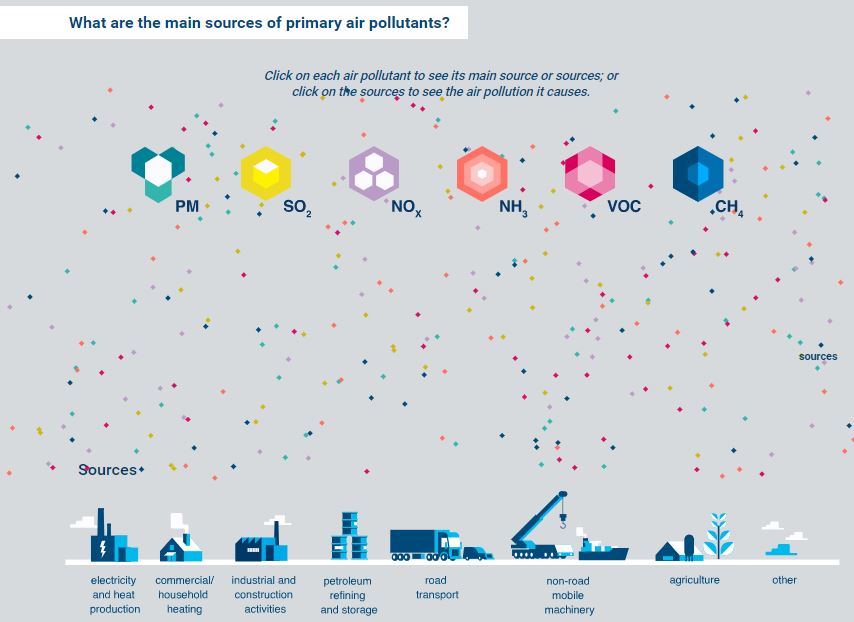
The sources of main air pollutants are more or less the same in all parts of the world. However, the share or certain pollutants in overall pollution depends on a number of factors.
The levels of pollution in the air people breathe depend on governments because they have all the instruments to resolve this problem – to be more restrictive in setting limits on allowed emissions, slap higher fines for exceeding the allowed limits, or incentivize the transition from fossil fuels to renewable energy sources.
The EU is a good example of what can be done to improve air quality – in the period between 2004 and 2017, the bloc managed to dramatically reduce emissions of sulfur dioxide (by 86%) and nitrogen oxides (by 59%) from the production of electricity and heat at thermal power plants and heating plants burning coal or other fossil fuels. However, in the region covered by Balkan Green Energy News, primarily in non-EU members (Albania, BiH, Montenegro, North Macedonia, Kosovo*, and Serbia), thermal power plants and heating plants remain major emitters of nitrogen oxides and sulfur oxides due to inadequate regulations and lax enforcement, contributing greatly to air pollution.
Burning fossil and other fuels for commercial, institutional and household heating and in heating plants with a capacity below 50 MW
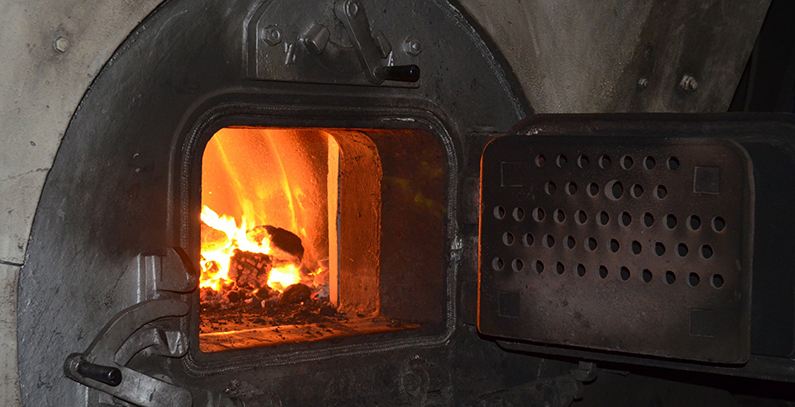
This sector includes heating plants that are either part of district heating systems in cities or provide heat for public buildings such as hospitals and schools, as well as individual commercial, institutional, and household heating, such as furnaces or boilers for central heating. The heating plants most commonly use coal or fuel oil, while the most used fuels in individual commercial, institutional, and household heating are coal and wood.
European Union – 1. PM2.5, 2. volatile organic compounds (VOC), 3. sulfur dioxide, 4. nitrogen oxides (source: the European Commission)
Region – 1. PM10, 2. PM2.5, 3. nitrogen oxides, 4. sulfur oxides (Albania, Montenegro, North Macedonia, Serbia – without BiH and Kosovo*; source: EMEP)
This sector is one of three, alongside waste and agriculture, with the lowest reduction in emissions in the period between 2000 and 2017 in EU. Since 2014, emissions of most pollutants from this source have even gone up, mainly due to the use of small biomass-fired heating boilers.
The biggest problem with household heating is particulate matter (PM2.5 and PM10) emitted into the air. This sector, along with the food industry, is the largest emitter of PM2.5 and PM10 in both the EU and the region. The source of these emissions is the combustion of wood biomass, inefficient combustion in old types of boilers, and the burning of waste. In poor countries, such as those in this region, the poorest citizens burn waste oil, scrap tires, and old paper, and they do it outdoors, but also in homes.
Burning fossil fuels for the production of electricity and heat
To produce electricity and heat, thermal power plants and heating plants (with a capacity of over 50 MW) most commonly burn coal, fuel oil, and natural gas. Using coal for these purposes causes so much air pollution that most EU countries are already working on coal phase-out, with plans to ban it entirely in 20 years at the latest.
The share of coal in electricity generation fell from 19% in 2018 to 14.6% in 2019, with total production of electricity from coal dropped 25%.
On the other hand, the region produces over 50% of its electricity from coal, and is building two new thermal power plants – the 350 MW unit 3 at Serbia’s thermal power plant (TPP) Kostolac B and the 450 MW unit 7 at TPP Tuzla in BiH. At the same time, preparations are under way to build TPP Kolubara B in Serbia and unit 8 at TPP Kakanj in BiH, as well as TPP Kosova e Re in Kosovo*.
European Union – 1. sulfur dioxide, 2. nitrogen oxides, 3 methane, 4. PM2.5 (source: the European Commission)
Region – 1. sulfur oxides, 2. nitrogen oxides, 3. PM10, 4. PM2.5 (Albania, BiH, Kosovo*, Montenegro, North Macedonia, Serbia; source: Bankwatch)
By modernizing equipment for the combustion of fossil fuels, switching from coal to natural gas as a transitional fuel, and imposing limits on emissions of sulfur dioxide and nitrogen oxides, the EU has managed to reduce these emissions from large combustion plants – thermal power plants and heating plants. Since 2004, sulfur dioxide emissions have been reduced by 86%, nitrogen oxides by 59%, and dust by 84%, according to data from the European Environment Agency (EEA).
The situation in the region is completely different. According to a report titled “Chronic air pollution,” 16 Western Balkan coal power plants (in Bosnia and Herzegovina, North Macedonia, Montenegro, Kosovo*, and Serbia), with a combined capacity of 8 MW, emitted more sulfur dioxide than all 250 coal power plants in the EU, whose total capacity is 156 GW.
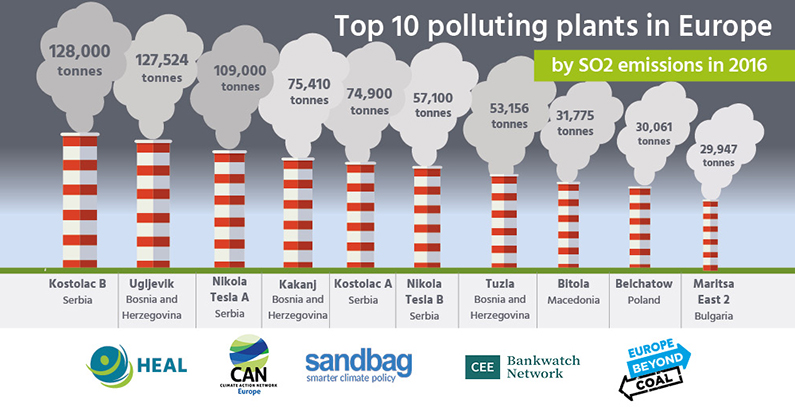
In 2019, actual sulfur dioxide emissions were six times above the limit set in National Emissions Reduction Plans (NERPs), while particulate matter (PM2.5 and PM10) emissions were 1.6 times above the limit. Emissions of nitrogen oxides were below the set limit. It is important to note that these emissions are lower than the actual emissions given that under the NERP rules, the Energy Community Secretariat recognizes emissions from projects that have been reported, but not completed.
NERPs are based on the EU’s Large Combustion Plants Directive (Large Combustion Plants Directive 2001/80/EC), which has been applied in these Energy Community contracting parties since January 1, 2018, and on transitional national plans under the Industrial Emissions Directive (Directive 2010/75/EC on industrial emissions).
When it comes to existing or old large combustion plants (installations with an installed capacity of 50 MW or more which have a use permit issued before July 1, 1992, or, if they do not have it, a construction permit, or which were put into operation before July 1, 1992), and these are mainly thermal power plants, there are two options: individual compliance with the sulfur dioxide and nitrogen oxides emission limit values set by the Directive or the application of NERP, which sets an aggregate limit for all facilities.
Activities in industry and construction

The source of pollution in industry and construction is twofold: the combustion of fossil fuels (oil products, coal, natural gas) and industrial processes and products use. The biggest polluters are the metals industry (the production of iron, steel, copper, aluminum, lead, zinc), the non-metallic industry, parts of the chemical industry (the production of plastics, agrochemicals, paints, varnishes, medicines, cosmetics), the oil industry, the graphic industry (the production of paper, printing), the food industry, mining, the building materials industry (the production of cement, lime, bricks, blocks), the wood industry, and oil and gas extraction.
This source also includes activities in the construction sector, such as building, demolition, or road paving.
European Union – 1. VOC, 2. sulfur dioxide, 3. PM2.5, 4. nitrogen oxides (source: the European Commission)
Region – 1. PM10, 2. nitrogen oxides, 3. PM2.5, 4. sulfur oxides (Albania, Montenegro, North Macedonia, Serbia – without BiH and Kosovo*; data only for industry; source: EMEP)
Emissions of sulfur oxides from industrial facilities in the EU fell by 89% in the 1990-2018 period, largely as a result of the Integrated Pollution Prevention and Control (IPPC) Directive, which was adopted in 1996. The directive prescribed emission limit values for industrial facilities. Under the IPPC Directive, it is possible to prescribe different emission limit values for two identical installations, depending on their impact.
The directive has since been replaced with a new one – the Industrial Emissions Directive – which prescribes even tighter standards and technologies (Best Available Techniques – BAT), whose application reduces pollution.
The IPPC Directive was transposed into Serbian legislation in 2004 as part of the Law on integrated prevention and control of environmental pollution. However, the problem is that this regulation is being implemented at a slow pace, so that few existing plants have received an integrated permit, while those that have obtained such a permit have also been allowed a certain period of time to comply. There is no transitional period for new plants, and they must meet the requirements of the integrated permit immediately after the start of operation.
Industrial Emissions Directive has not yet been transposed.
An integrated permit, according to the text of the law, is a decision adopted by the relevant authority to approve putting into operation a facility or a part of a facility, or performing an activity, which contains documentation with defined terms that guarantee that such facility or activity meets the requirements stipulated by the Law on integrated prevention and control of environmental pollution.
The purpose of this regulation is to ensure an integrated approach to controlling pollution, reducing the consumption of resources and energy, preventing or reducing emissions into the air, water, and land, and managing waste.
Industrial activities which require an integrated permit are: electricity generation, metals production and processing, the minerals industry, the chemical industry, and waste management.
In Serbia, the air pollution from existing or planned facilities draws public attention. The example of an existing facility is the Smederevo steel mill, where a protest was recently held over toxic dust. Smederevo was also among 14 cities with excessive pollution in 2019, resulting in the presence of particulate matter PM2.5 and PM10.
An example among new facilities, or facilities under construction, is the contested tire factory Linglong in Zrenjanin, where police recently prevented environmental activists from attending a public consultation on the future facility’s environmental impact assessment.
The combustion of fossil fuels in vehicles in road transportation
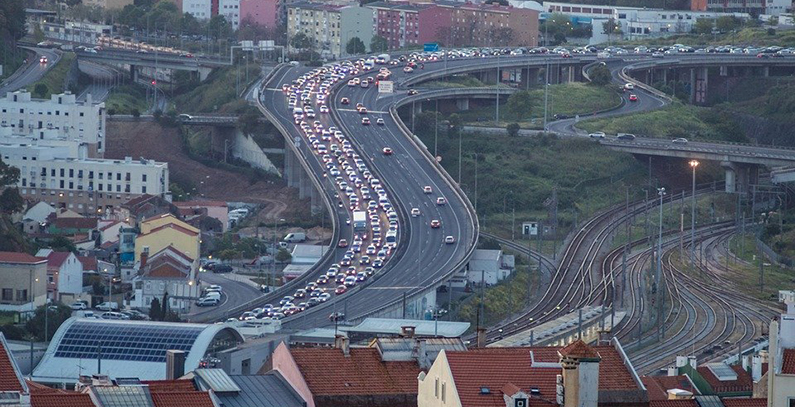
About 50% of crude oil in the form of oil products is consumed in road transportation. Given the harmful effects of burning fossil fuels, this says enough about the volume of air pollution generated by automobiles, trucks, buses, vans, and other vehicles. A further problem is that most of the emissions from road transportation are generated in densely populated places – cities.
European Union – 1. nitrogen oxides, 2. VOC, 3. PM2.5, 4. PM10 (source: the European Commission)
Region – 1. nitrogen oxides, 2. PM10, 3. PM2.5 (Albania, Montenegro, North Macedonia, Serbia – without BiH and Kosovo*; source: EMEP)
The EU has managed to slash emissions from road transportation as well. According to the European Environment Agency data, emissions of volatile organic compounds from transportation dropped by 87% between 1990 and 2017, as emissions of sulfur oxides fell 66%, and nitrogen oxides, 40%.
The good results are due to imposed limits on emissions from vehicles and tightened fuel quality standards, as well as the adoption of air quality regulations and sustainable urban mobility measures at the local level. Emissions of sulfur oxides, for example, were reduced thanks to limits on the content of sulfur in oil products.
The main problem in the region is outdated vehicles coming from the EU. Because of this, the region is often called the “graveyard” for “dirty” cars from Europe. Most vehicles are older than 10 years, while the average age of cars in some countries is 15 to 20 years, which indicates that there is a large number of vehicles in the region with a Euro 3 engine.
What is the difference between Euro 3 and Euro 6, the latest standard to be introduced? The Euro 3 standard allows nitrogen oxide emissions of up to 0.50 grams per kilometer, Euro 4, 0.25 grams, Euro 5, 0.18 grams, and Euro 6, just 0.08 grams per kilometer. An automobile with a Euro 3 engine releases six times as much nitrogen oxides as a car with a Euro 6 engine. The Euro standards also cover carbon monoxide and particulate matter.
Agriculture

Pollution in this sector comes from the use of pesticides and animal manure, but also from rice growing and emissions released by ruminants. Pesticides and manure are a source of ammonia, while rice fields, fertilizers, and ruminants are responsible for methane emissions. Particulate matter (PM2.5 and PM10) and nitrogen oxides come from fires on agricultural land.
European Union – 1. ammonia, 2. methane, 3. VOC, 4. PM2.5, 5. nitrogen oxides (source: the European Commission)
Region – 1. ammonia, 2. PM10, 3. nitrogen oxides, 4. methane (Albania, Montenegro, North Macedonia, Serbia – without BiH and Kosovo*; source: EMEP)
The European Environment Agency’s data shows that agriculture, along with small heating plants and household heating, is the source of pollution with the lowest reduction of emissions – less than 10% in the 2000-2017 period. Since 2013, ammonia emissions in the EU have even increased due to agriculture.
A major problem in the region is dioxin and furan emissions from the incineration of agricultural waste. Even though it is prohibited by law, this practice continues, causing serious air pollution.
Crude oil processing and oil products storage
Processes such as crude oil storage, oil processing and the production of oil products, and oil products storage are the source of various pollutants. Air pollution in this sector can be divided into two groups: emissions caused by contact between hydrocarbons and the external environment and emissions from the burning of various fuels in order to produce energy for refineries’ own consumption.
The first group comprises benzene, toluene, and xylene, which generate volatile organic compounds, and the second includes sulfur dioxide, nitrogen oxides, hydrogen sulfide, carbon monoxide, carbon dioxide, and particulate matter.
European Union – 1. sulfur dioxide, 2. volatile organic compounds, 3. nitrogen oxides
Region – 1. sulfur dioxide, 2. volatile organic compounds, 3. nitrogen oxides
Refineries, as industrial facilities, are covered by the Industrial Emissions Directive, which helps reduce the pollution they generate.
Nature

Plants and trees release isoprene, which belongs to the group of volatile organic compounds, while biological decomposition generates sulfur oxides and nitrogen oxides. Some natural phenomena, such as volcanic eruptions, wildfires, sandstorms, and lightning, are a source of sulfur oxides, nitrogen oxides, and particulate matter.
In nature, particulate matter comes from dust on the earth’s surface, sea salt in coastal areas, and biological decomposition.
Landfill fires
Accidental or intentional fires at landfills, as well as the burning of waste in bins, are a major source of air pollution. The burning of waste releases dioxins and furans – some of the most toxic compounds, which belong to the so-called unintentionally produced persistent organic pollutants (POPs). These pollutants are so hazardous that, for example, one of dioxin’s isomers – 2,3,7,8 TCDD – is considered the most toxic synthetic compound in the world.
Due to their high resistance to degradation, they remain in the environment for a long time, while their partial volatility allows them to travel long distances through the atmosphere. All these properties ensure that these compounds are widespread in the environment, even in areas where they have never been used. Apart from the combustion of waste, they are also generated by fires in buildings, vehicles, and the metals processing industry, with large quantities also originating from the 1999 bombing of the Federal Republic of Yugoslavia.
Their widespread presence and very harmful effects on human health (potential carcinogenic and mutagenic effects) prompted the need for global action, which resulted in the adoption of the Stockholm Convention on Persistent Organic Pollutants.





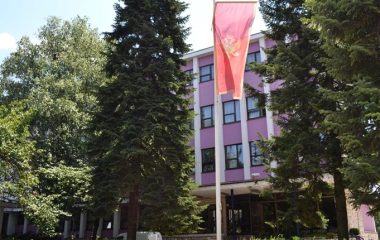



Be the first one to comment on this article.